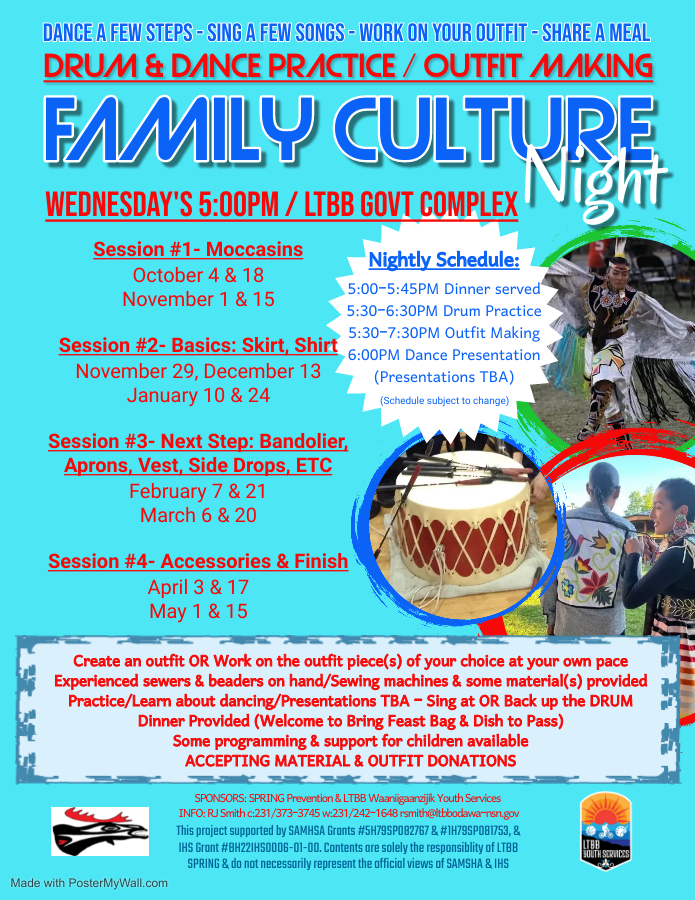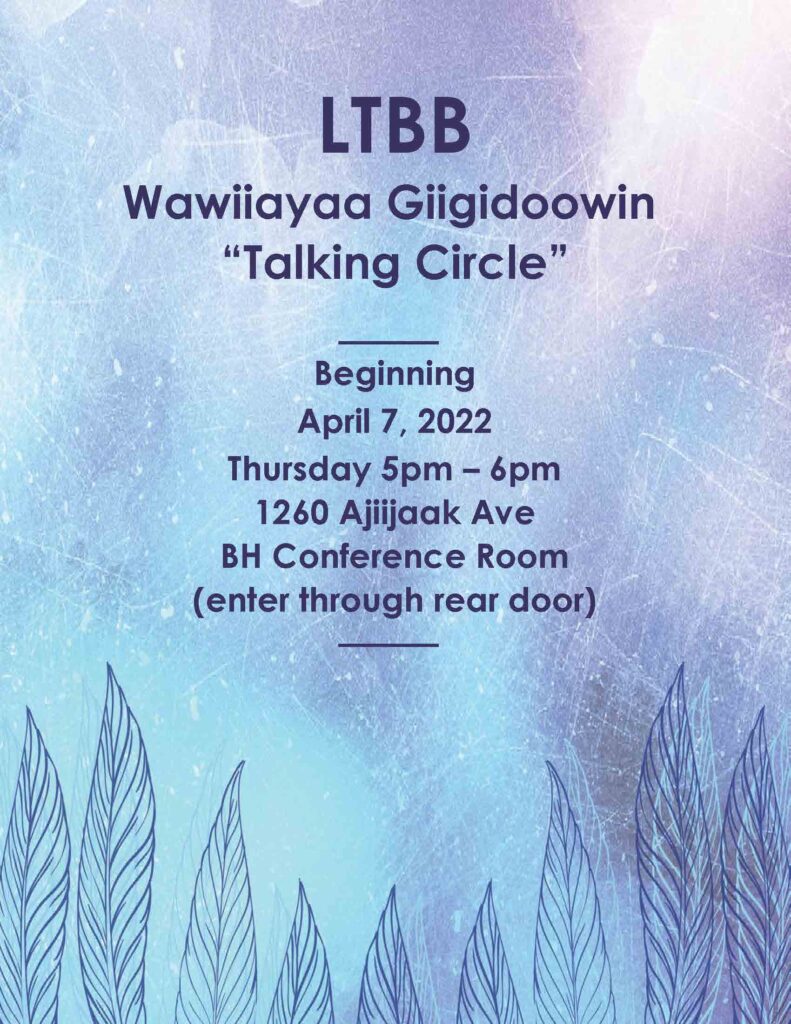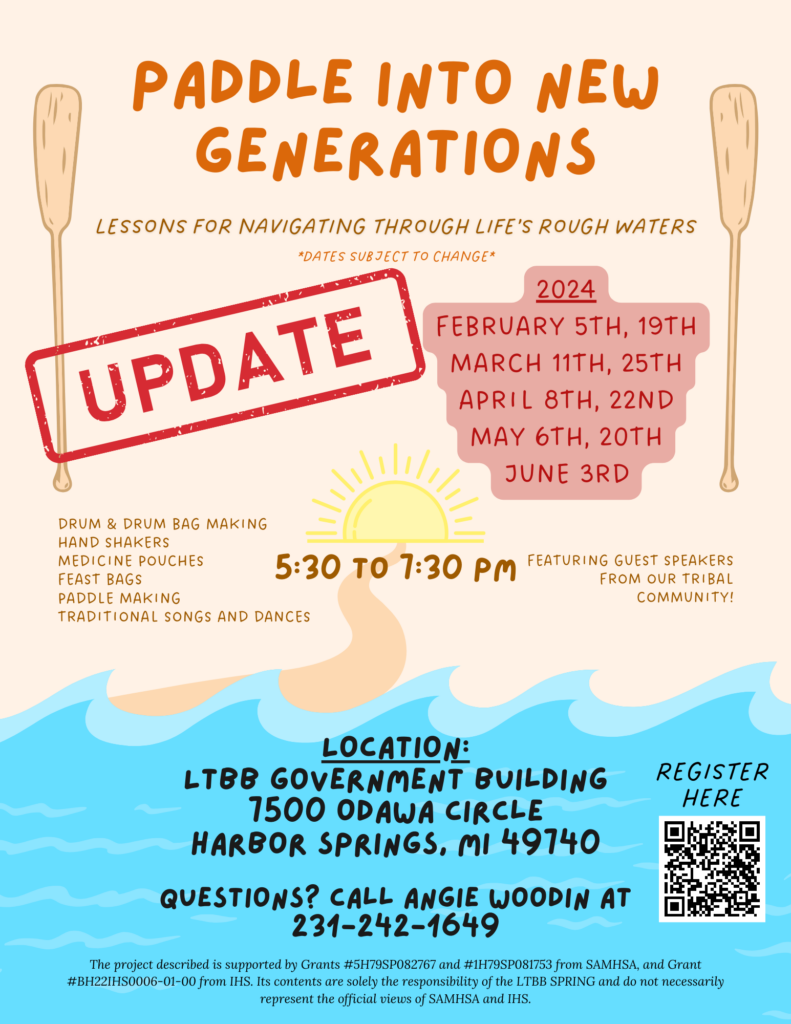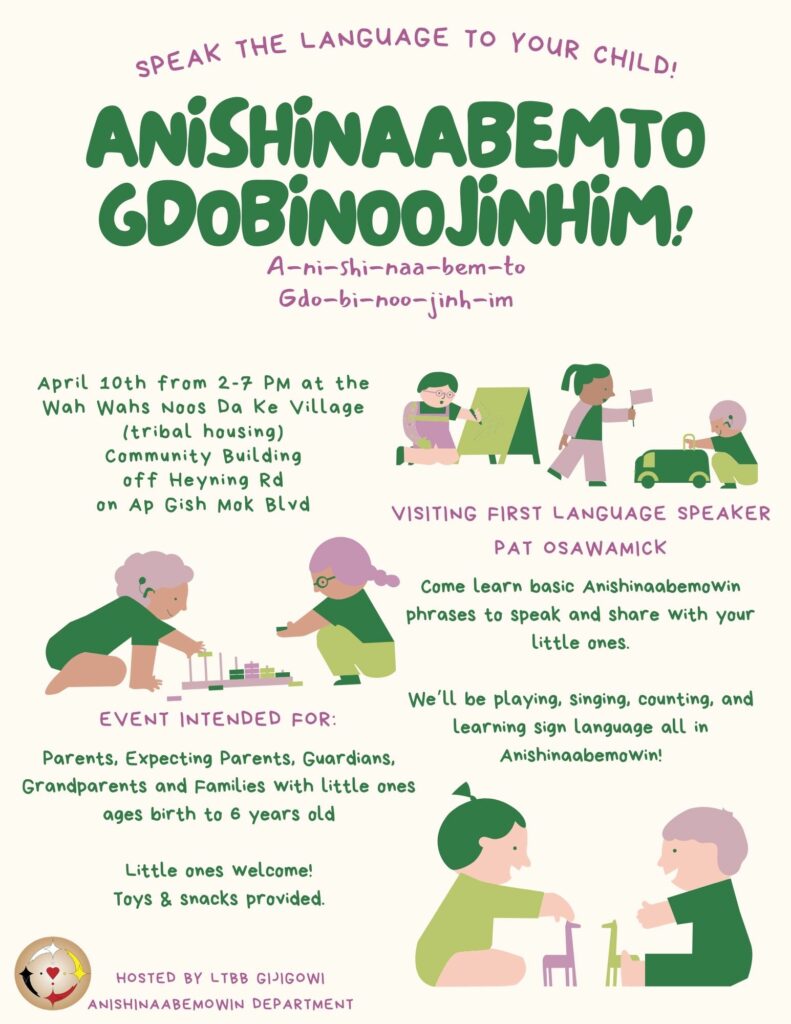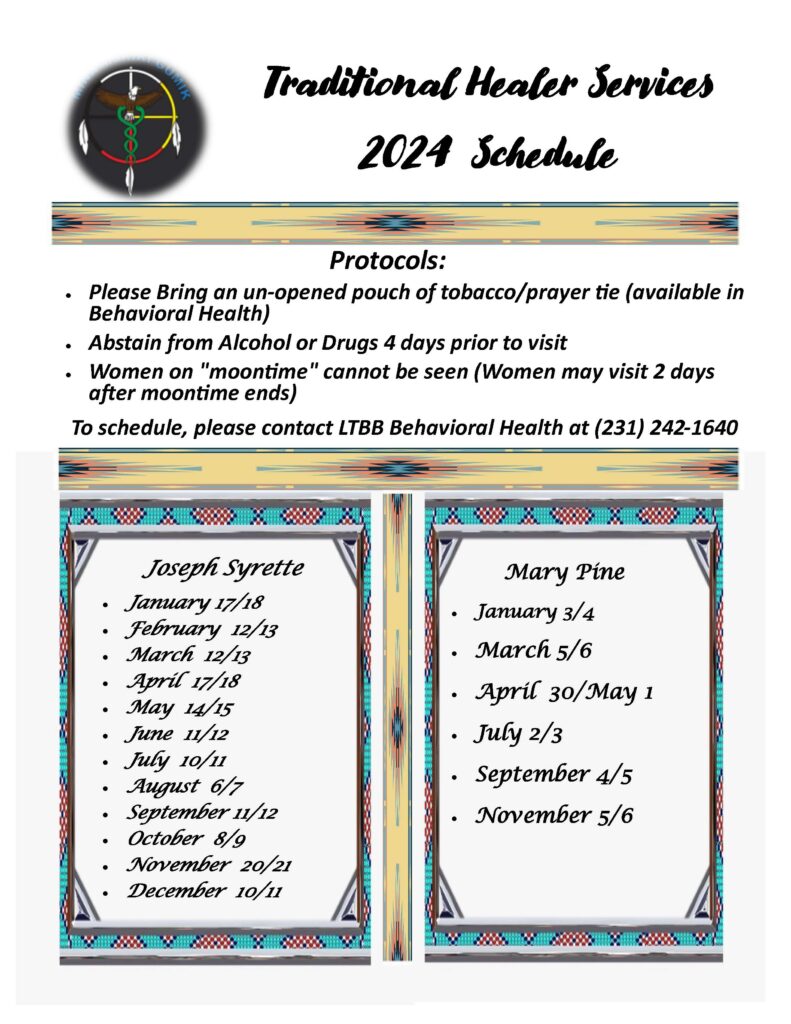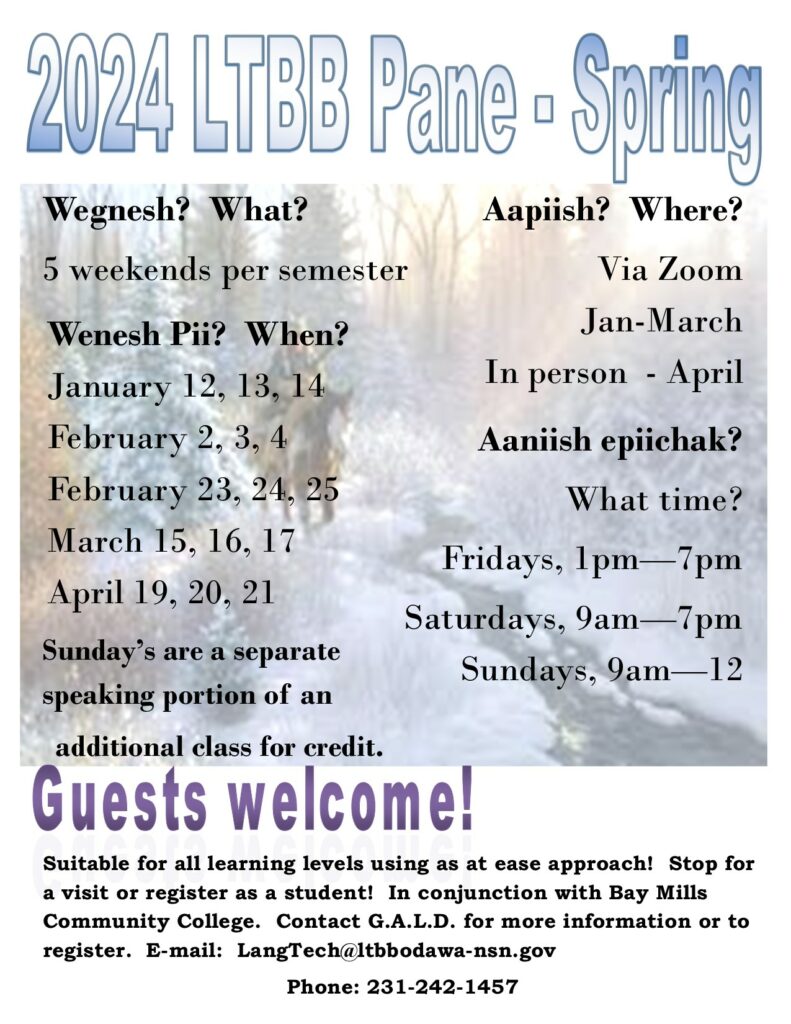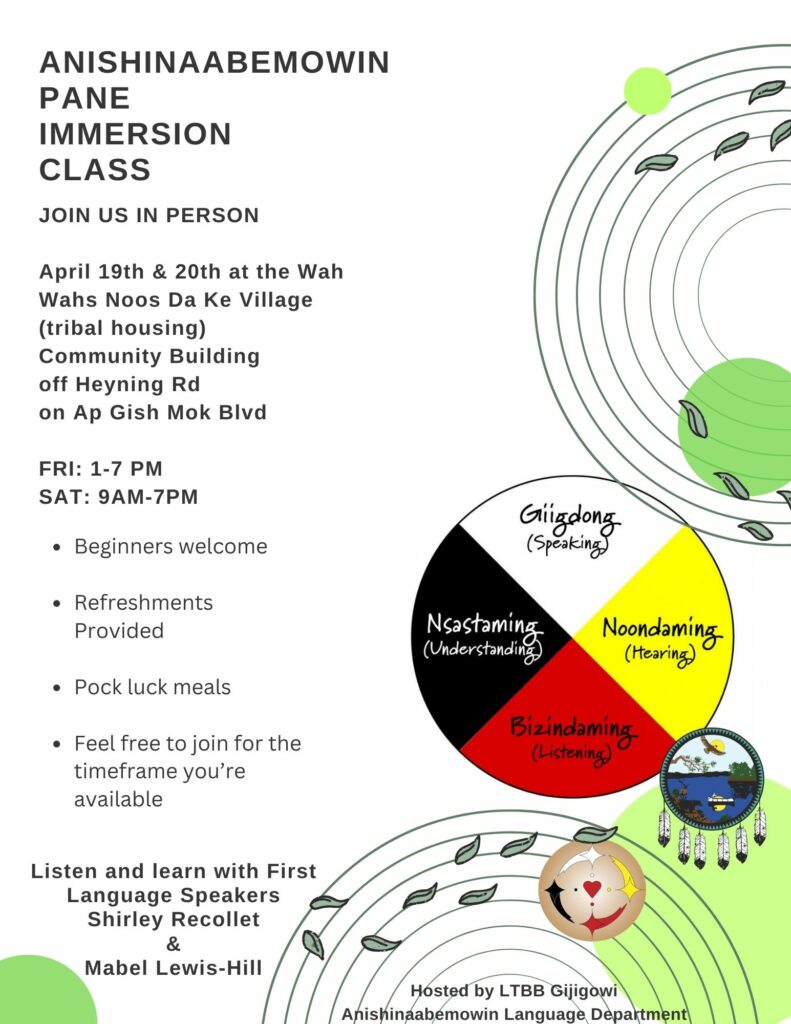About the Waabshki-Miigwan Drug Court Program
To all that take interest in our program,
The Waabshki-Miigwan Program is dedicated to my grandmother, the late Hon. Rita Gasco-Shepard. Grandma was a Beautiful Odawa woman whom I have always cherished. She taught me many lessons in life about love, faith, and most importantly for me, respect. I learned by her example that I was capable of being all that I dreamed. She taught me how to respect myself and to live in Truth. She helped me to find the purpose that God has created me for which has lead to blessings far beyond what I could have imagined for myself. I will always be grateful for her love.
She was born Rita Marie Ann Gasco in 1939, the oldest of five children born to Stella Gasco of Harbor Springs, Michigan. She lived with her mother and grandparents in Indian Town until the age of nine, when she was placed in foster care. Grandma grew up in Harbor Springs and Petoskey, and lived and worked her entire life in the area. Being part of the Boarding School Era, Grandma attended Holy Childhood day school. During this time she was separated from her two sisters. She reconnected with one sister shortly after High school, and all three sisters were briefly re-united during the last years of my grandmother’s life. Grandma married my Grandpa, Harvey Brubacker, during her senior year of high school and started a family. She had four children with my mother, Vicki, being her eldest. Grandma received her GED in the early 1970s and encouraged all of her children to finish school and pursue higher education. Grandma and Grandpa would later divorce and both remarry. My Mother, Aunts, and Uncle were raised by Grandma here in Northern Michigan.
It seemed that Grandma excelled in everything that she did. When I was a young child I remember seeing all of her trophies that she had been awarded for her numerous talents. Grandma played sports, she was a singer and musician, a wonderful artist, and like I said, just plain good at everything she did. She was a master in needlecraft and she is well-known for her intricate beadwork. She enjoyed watching birds and walking Duke, her miniature Doberman. She went to all of her Grandchildren’s sporting events and kept very accurate stats in the meanwhile.
Her lifestyle was rich with joy in so many areas especially in her hobbies; my Grandma loved playing golf most. She began playing in the late seventies and quickly became a local legend as she would outplay most men. She was just a tiny woman at 130 pounds, but what she lacked in strength she made up on the greens. Her last year of league play was the summer before she got sick. In that year Grandma and her partner played in the championship of the local men’s Tribal golf league. The opposing team was comprised of her husband Flash and his partner Harvey. At the conclusion of the match Grandma lost by a few strokes. Flash told me that she didn’t talk to him for three days after the match. I guess she was just a little upset that he had beaten her. Two years after she walked on, everyone still raves about how she would beat the pants off most of the men she played against. She had a truly competitive nature and I think she strived for excellence in all areas of her life.
In the 80’s, Grandma started a new chapter of her story. It was a path that would lead to her fulfilling her purpose, one in which she would touch countless lives, and leave a lasting legacy for her family and community. In 1983, grandma took a job at a local law firm. Later, when one of the attorneys left the firm to become an Emmett County Judge, he offered her the position of Probate Court Registrar. Grandma accepted the position and served the court until her retirement at the age of 62. During her career she learned many things about the workings of the legal system, and also began to develop an interest in doing what she could to give back to the Native American community. Then, in 1998 the Little Traverse Bay Bands posted the position of Appellate Justice for which my grandmother applied. She was chosen for the position and was sworn in on May 17, 1998 to serve several terms as judge before retiring again in 2008.
During her judgeship Grandma became increasingly interested in promoting the health and well-being of the tribal youth, and participated in the Tribe’s Healing to Wellness Court. One component of the court was to build a peacemaking process to solve disputes among community members. While on the team my grandmother had the opportunity to attend a training in Kake, a small village on an Alaskan island in the Pacific where the local Tribe would be presenting its experience in developing a Peacekeeping program. In Kake my Grandmother learned about Peacekeeping, but more importantly learned a lesson that would change her perspective on healing and alter the way she would live out the rest of her days here with us. Not many years after her visit to Alaska, Grandma walked on with grace after a brief but intense battle with cancer.
Before Grandma walked on she asked me to pass on the story about her experience in Kake. She made me promise to memorize and tell the story when opportunities would come about. Before Grandma found out she had cancer and during a time of her life when she was the happiest, she wrote this story:
I was on my way to Alaska, excited to be on a journey to a land I had never seen. As a member of a Tribal peacekeeping team, I was one of several who were being given the wonderful opportunity to visit Kake, a little village on a small Alaskan island in the Pacific. The purpose of our journey was to get a firsthand experience at how this community developed their peacekeeping program, which was based on traditional native values. This experience would then aid us in our own efforts to establish a Tribal peacekeeping system back home in Michigan.
We were told that our visit was occurring during a time of the year when the landscape would be exposed and the wildlife would be very active. We would be visiting the island of Kake in the spring. The salmon would be running, making their own journey up into the mouth of the river to spawn. The bear and eagle would be moving about, hoping to feast on the spawning fish at river’s edge. I, too, had hopes about this journey…hopes that I would fulfill my lifelong quest of finding my first eagle feather.
Our small plane landed on the airstrip in the village of Kake, which was tucked away on this Alaskan island. I observed my surroundings and concluded that Kake was in a very natural, depressed and untouched state. It was shortly after arrival that I shared my dream of finding an eagle feather with our facilitator and island guide, Mike. He reassured me that my search would end here in Kake because the possibilities for where a feather might be discovered were endless. Eagle feathers could be found below trees that held the favorite roosting spots, out on the ocean flats during ebb tide, and along the river where the mighty bird comes to feed.
The first day on the island was spent getting acclimated, settling in and taking in some of the local sites. With determination, I started out early the next morning enjoying a walk through the rustic village of Kake. The weather was typical for a day on an island south of Juneau. I could feel the mist on my face while my body was chilled by the dampness that hung in the air. As promised, the island’s activity was occupied by the wildlife moving about. Mother bear would snag a fish and carry it off to the woods, where the noisy cubs were climbing in the trees and letting her know they were hungry. Eagles could be seen flying overhead or perched in any of the tall pine trees along the river.
I walked along the river in various paths, not venturing too far in any particular direction for fear that I might meet a bear. As I looked up to the treetops, I could spot two and three eagles at a time. I walked up into the brush, which was so thick that I felt as if I was walking through a rainforest. I reached the mouth of the river. The tide was out and my walk ended on the misty ocean flats. It is where my walked stopped for that moment that my search began. I could see eagles fishing in the little pools of water that had been left on the ocean floor after the tide had receded. If I got too close, the feeding birds would fly off. Timidly I kept walking. I was a bit uneasy about going further out onto the flats, nervous that the tide could return at any moment, but I continued walking and looking, looking and walking. There wasn’t an eagle feather to be found.
I decided to go back to the hotel, ending my day’s quest. Upon my return, others sensed my disappointment. A traveling companion named Jeff presented me with a beautiful immature eagle feather that he had found. I would treasure this feather but I would not give up on my quest.
After a couple of days of long walks and fruitless searches, Mike offered some encouragement. He had planned a tour for us later that evening that would take us around the island. He also said that we could make a stop at the village dump. While this sounded somewhat unattractive, this little rendezvous was planned because eagles often visited the village dump to scavenge through the garbage, which often left a trail of feathers. This could be just the place I had been waiting for.
Our group of six to seven people had a very pleasant road trip around the island, although the drive couldn’t really be described as having gone “around”. You see, when traveling on this remote island you would follow the roads until they simply didn’t go any further. The roads we took on our tour would go just so far and then they would stop, causing us to turn around and take another route. We enjoyed the scenery and occasional spotting of wildlife. We also stopped to pick medicinal plants to accompany us on our journey home. Our tour did end at the village dump, where we all got out and started rummaging through the debris left by the villagers in hopes of finding an elusive eagle feather. A couple of pretty raven feathers were spotted and kept, which was considered a treasure as well. In Alaska, the raven and the eagle are referred to as the “lovebirds” and are often pictured together in Alaskan native art.
While everyone was preparing to depart, I was preparing myself for bringing closure to another day without having fulfilled my lifelong quest of finding an eagle feather. But just as I was walking away, I looked down ay my feet and saw a quill sticking out of the muck. I reached down and pulled at the quill. Out from the rubbish came the sorriest and dirtiest feather I had ever seen. Mike our guide, coaxed me to throw it back on the ground. He promised that he would get me another feather, explaining again how plentiful they were on the island. He even offered to share one of his feathers. I ignored his urges. As soon as I saw the feather, I knew it was from an eagle. I also knew at that moment that I was keeping it.
Later that evening, I returned to my hotel room with the dirty and mangled feather. With soap and water, I began to gently wash the feather, fanning it to dry. What appeared was the most beautiful eagle’s white tail feather. It was my treasured gift from the Creator.
The next day I was given the opportunity to share the story of my feather with a group of young people from San Diego, who were also visiting Kake. Their journey to the Alaskan Village had been a reward for their sobriety. The story I shared with them was not just about the search for the feather but about the transformation of the feather, which is symbolic of our own lives. When something that is so dirty and mangled can become beautiful, clean and white, then there is hope. Each one of us gets dirty, whether we get the dirt on ourselves or other people throw it on us. But with some gentle care, and with the help of the Creator, we can make ourselves clean and pure again.
It is my own personal story that allows me to share the white feather story. I am a simple person who has lived a long life. Much of my childhood was spent in foster homes, which is a rough life for any child. I have done things I am not proud of. Over the years, bad things have happened to me, some of which have been my own doing, some of which have not. I have also had many wonderful experiences and I am proud of the wonderful accomplishments in my life. I believe that the Creator has always walked next to me. It is with the Creator’s help that I have been able to walk my path and make my own transformation. Through my life experiences I have learned that the greatest lesson is forgiveness. The ability to forgive both oneself and others is truly an opportunity for healing.
EPILOGUE
Our own Tribal Court has a “sobriety” court, which is called the Healing to Wellness Court, which offers support and resources to young substance abusers. As a Tribal elder, I am one of the program’s team members and I participate in reviewing the progress of our participants and in making recommendations for their healing path.
One of our participants was having a difficult time maintaining his sobriety. He showed so much promise; he was someone who could conceivably one day lead our tribe. I could see that he was fighting his demons and they had a strong hold. My heart was heavy with worry for him. I put down tobacco and prayed to the Creator, asking for guidance. The Creator answered me a few days later as I lay awake in bed asking again for insight on how to help this young man.
The kind and loving Creator brings people and events into our lives for a reason, which we will recognize if we pray and listen for his answer. He revealed to me that night why He gave me the white feather.
I said goodbye to the feather a few days later after telling our young man this story and presented him with the feather. I told him that I would pray for him. I also expressed my hopes that the Creator would use the feather to bring strength and encouragement as he walked his path. I also told him that I hoped one day the Creator would make it known to him that it would be time to pass the feather on to another who needs it more than he does.
Just as I had pulled the dirty and mangled feather from the muck and then transformed it into a beautiful clean feather, it is with much prayer that I hope each of our young people who are struggling can also be pulled from their troubled paths to find strength in the Creator to make their own transformation.
On May 21st, 2008 Grandma walked on. A fire was lit in the pouring rain and continued to burn until the end of the fourth day. The Thunders came rolling through as the sun went down.
It was Grandma’s wish that the feather be passed on when the moment was right but even more it was Grandma’s dream that, with the help of the creator, we would pass on a hope of healing and redemption to other natives. She could see the potential in our community members who struggle with addiction and she could see the potential in that “dirty mangled feather” she picked out of the muck that day. This wasn’t because she had some great gift. It was simply because she could relate to the person who struggled and she could relate to that feather. When she was coaxed to throw the feather back, I believe, even at that moment, she saw herself in that feather and she saw her community in that feather. Because of her healing she knew there was hope for that feather, as she knew that everyone in our community was worth saving.
As we learn to walk on the red road we will find brothers or sisters that are stuck in the rubbish of life, dirty and mangled from the tribulations of addiction and abuse. Let us not walk any further without extending a helping hand. Many may have already passed by and, for selfish reasons, have left them behind thinking that someone else would eventually stop to help. It is time for those of us who have been blessed to experience hope again, to fulfill Grandma’s last wish. You see, Grandma hoped that when faced with the decision of keeping a feather or throwing it back, her people would rise to the responsibility of providing the gentle care needed for a transformation to take place in their fellow Odawa. We should all remember that in some way we have all had dirt heaped on us and without the help of the Creator and our fellow man we would all still be buried in rubbish.
In the months leading up to her death, my Grandmother and I talked many hours about how we could help make positive changes in our community. Since then I have followed in the footsteps of my Grandmother and joined the Tribal Court Team. I was hired to develop the Adult Drug Court Program which we have since named Waabshki-Miigwan, (White Feather). During this experience, the Tribal Court Team and I have kept Grandmothers story close to our hearts and in honor of her we have incorporated her story into our curriculum.
We hope our program will help you find the healing that I, my Grandmother, and many others have found on our journey to wellness. This program was developed for our brothers and sisters that struggle to find hope. Please understand that we are only passing on what was freely given to us by those who took the time to pick us out of the muck on the road to healing and wellness. We believe in our Elder’s experiences and teachings because they have worked for us in extraordinary ways. Our prayer is that our Waabshki-Miigwan Program will help you to find peace. We wish you the best and hope to see you helping on the red road. Chii Miigwetch.
Sincerely,
Joe Lucier and the WMDCP Drug Court Team



